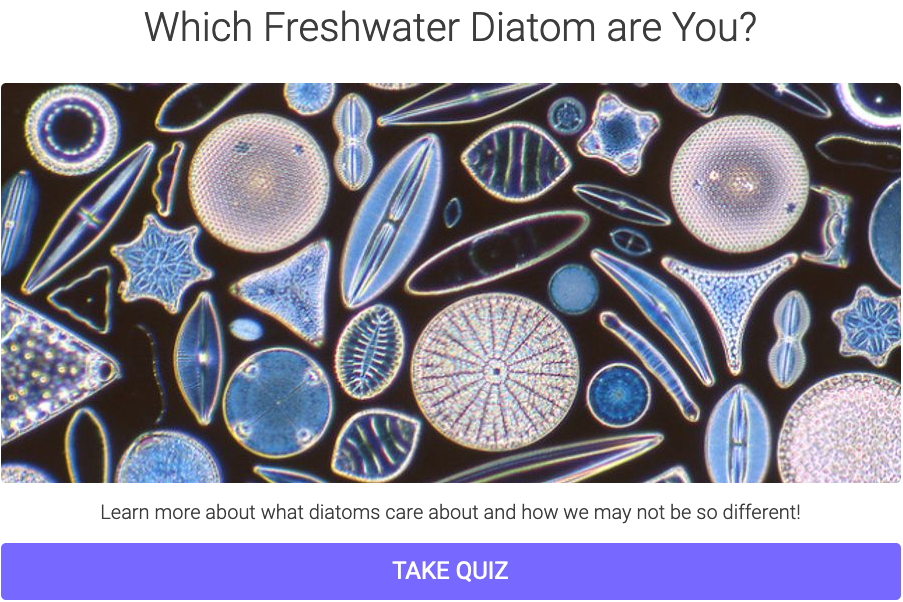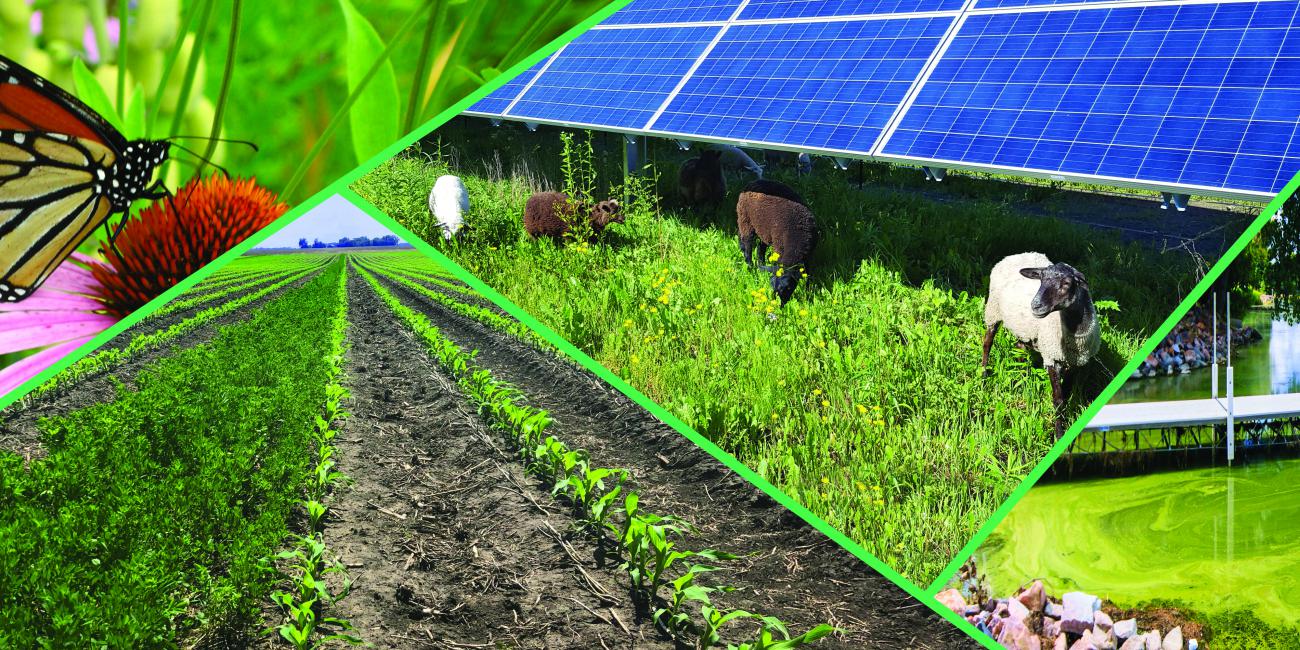
What diatom is most like you? The average person has probably never asked what they have in common with these unique microscopic species of algae, but a new interactive project from the St. Croix Watershed Research Station can help you think about the incredible richness of life in our lakes and rivers.
Different diatom species thrive in different water conditions, and they create glass shells that can last a long time in lake sediments. This means it’s possible to understand what the water was like in the past by examining what diatoms were there.

This winter, Tori Thrash, the Environmental Research Fellow at the Research Station, launched an online personality quiz so anyone can match up with one of several species of diatoms.
Thrash graduated from the University of Iowa in 2019 with a B.S in Environmental Science, Minor in Biology, and a Certificate in Sustainability. In the summer of 2018, she was introduced to diatoms during a four-week experiential field and lab course at Iowa Lakeside Lab in Okoboji, IA on the Ecology and Systematics of Diatoms taught by Mark Edlund (SCWRS senior scientist) and Sylvia Lee. The next summer, she came back to Lakeside as the teaching assistant (John Kingston Diatom Fellow) for the class.
Thrash has spent the last several months working at the Research Station getting hands-on experience conducting environmental research — including working on projects that include using diatoms as environmental proxies to understand lake conditions in the past.
Here’s more about Thrash, diatoms, and how this idea came to life.
Discovering diatoms
“I discovered what a diatom was the summer before my junior year of college when I took the class at Lakeside Lab. It felt so refreshing to discover something for the first time. I had no idea what diatoms were and suddenly I got to see hundreds of species that we sampled from different ecosystems like lakes, fens, prairie kettle holes, vernal pools, rivers, creeks, and streams! I fell in love with getting to experience totally new ecosystems and got so excited to see new things under the microscope.
“There are an estimated 20,000 to 2 million species of diatoms so, chances are that when I look at a slide from a new location, I will see a diatom that I never have before.
“The only way I can describe studying diatoms is like being an art collector, a detective, and a genealogist on top of being a naturalist, an ecologist, and limnologist.”
“Once you see just a little bit of the vast diversity of diatoms, you will understand why people become fascinated by them. Their glass cell walls are so ornate and beautiful. Each species has a unique morphology that corresponds with their environmental tolerances and the ecological niches that they fill.
“We can use this idea that different genera or species of diatoms prefer certain environmental conditions to create an estimate of what environments were like in the past, based on diatom assemblages. For instance, there are some diatoms that outcompete other species when there are more available nutrients; when you see that these diatoms were present in the past, it’s your turn to figure out why nutrients were higher. Did logging and runoff occur? Was there a source of direct nutrient pollution?
“The only way I can describe studying diatoms is like being an art collector, a detective, and a genealogist on top of being a naturalist, an ecologist, and limnologist.”
Unique outreach
“Part of my job as the Fellowship at the station is to help with outreach. I was invited to help with the SCWRS booth at the SMM event called Behind the Sciences on MLK day. The event featured the work that the SMM research and collections staff does every day.
“The goal was to engage with the community about our science to promote curiosity and encourage learning.
“Before I found environmental science, I was an education major and an artist. Both of these interests bleed into my life as a scientist.”
“I began brainstorming some ideas that would fit within those goals that people of all ages would enjoy. I let my sense of humor guide me, I giggled at the idea of creating a diatom personality quiz inspired by those that you find on Facebook about which Disney or Harry Potter character you are most similar to, based on questions that are supposed to reflect your personality traits and preferences. After surveying some staff at SCWRS they seemed to really like the idea too.”
Sharing microscopic
“I thought that a personality quiz could allow people to make connections between how they live and thrive and how other organisms do the same, even the ones we cannot see with the unaided eye.
“I wanted to get people thinking about the basic ideas of biology and ecology, help them understand why there is so much diversity on Earth, and introduce them to diatoms an important facet of research at the station. And I wanted the quiz to be an example of how diverse diatoms are, how they fit into different ecological niches, and how they help with water quality research. This was a way to demonstrate how ‘form follows function.’
“Something I love about outreach and education is how I can express my creativity and love for learning. Before I found environmental science, I was an education major and an artist. Both of these interests bleed into my life as a scientist. This was a really fun way to express my interests and interact with people to get them excited about learning.”














